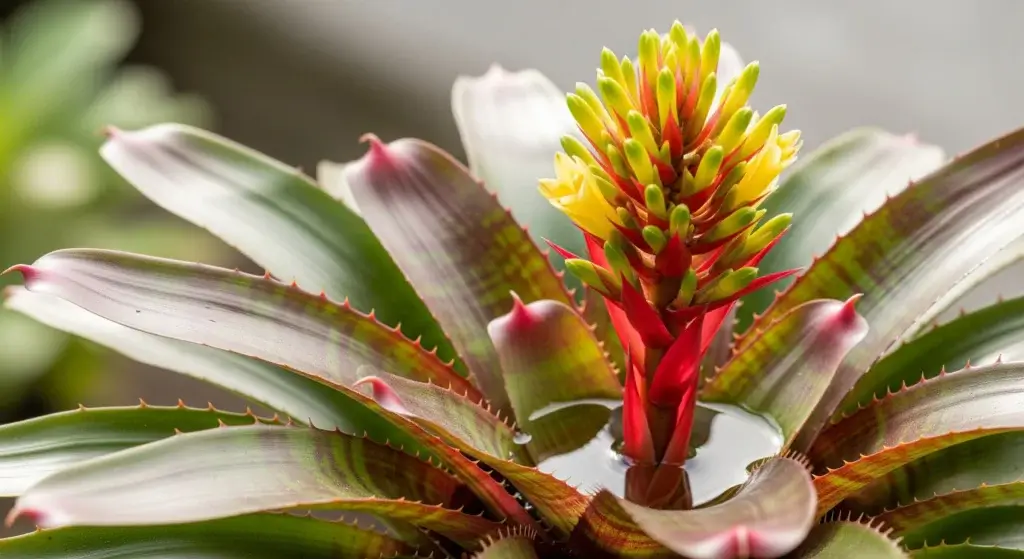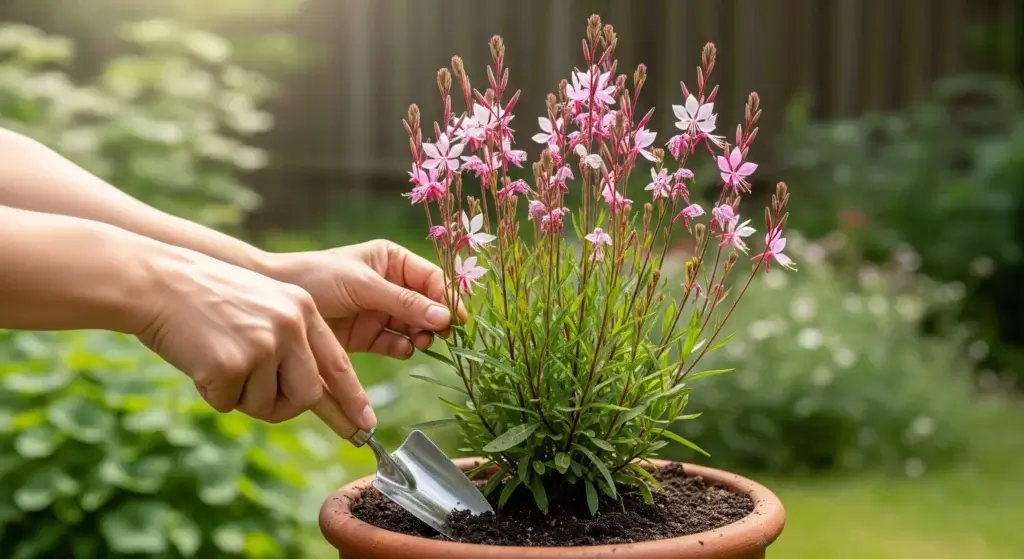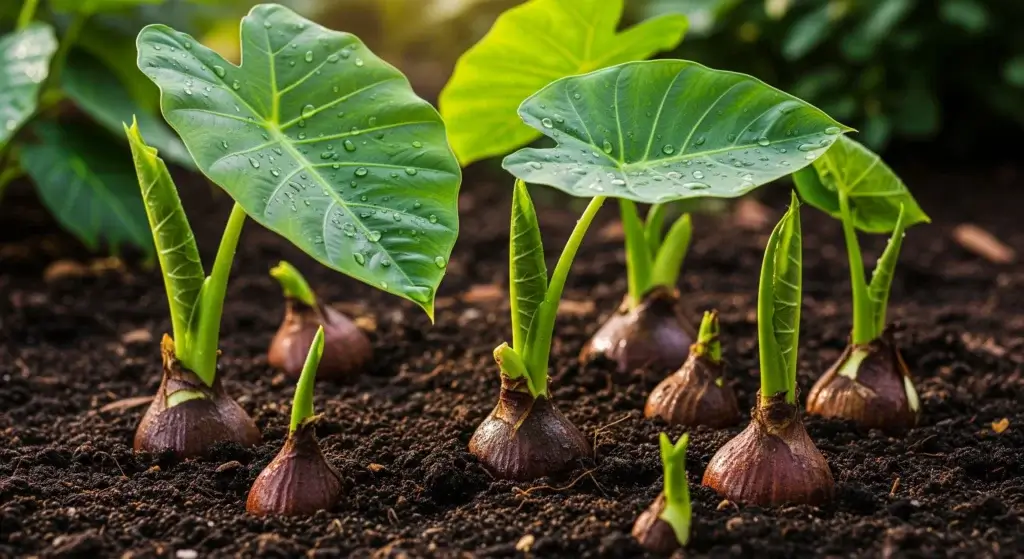
Finding rotting onions after all your hard work sucks—but it happens.
Bulb and root diseases are common and can wipe out your crop fast if you’re not careful.
The good news? If you know what to look for and act early, you can stop the damage and keep it from coming back.
This guide breaks down how to spot, treat, and prevent the most common onion diseases so you can save your harvest.
Understanding Onion Rot: The Silent Garden Destroyer
If you grow onions, rot is one of the biggest threats you’ll face—and it usually hits when you least expect it.
Most onion rot comes from soil-borne fungi or bacteria.
They hang out in your garden soil for years, waiting for the right mix of moisture and temperature.
Once they strike, it’s often too late to save the crop.
In commercial farms, onion rot can wipe out 20–40% of a harvest.
That’s a huge loss when you’re managing thousands of acres.
But even in a backyard plot, losing your whole onion bed stings. Months of work gone. No onions in storage. No payoff.
Here’s the tough part: you often don’t know it’s happening until the bulbs start to get soft or collapse.
By then, the damage is already done.
If you’re serious about growing onions—whether you’ve got a small raised bed or a few rows in the ground—you’ve got to know what causes rot, what it looks like early, and how to stop it before it spreads.
- Read also: A Comprehensive Guide: Strategies for Onion Maggot Control
- Read also: Symptoms and Solutions: Understanding Onion Fly Damage

Common Types of Onion Bulb and Root Diseases
If your onions suddenly wilt, pull up too easily, or smell off, you’re probably dealing with one of these common diseases.
They’re mostly soil-borne, and once they’re in your garden, they stick around.
Fusarium basal rot
This one hits the base of the bulb.
It’s one of the worst because it creeps up unnoticed until the bulb is soft and rotting.
Symptoms to watch for:
- Brown, water-soaked lesions at the base of the bulb
- Soft, mushy texture in affected areas
- White to pink fungal growth on rotted tissue
- Yellowing and wilting of leaves, starting from the tips
- Easy plant removal from soil due to root decay
Favorable conditions:
- Warm soil temperatures (75-85°F)
- High humidity
- Poor drainage
- Mechanical injuries to bulbs
- Continuous onion cropping
White rot disease
This one’s rough. It stays in the soil for up to 20 years and spreads fast when conditions are right.
Key identifying features:
- Fluffy white mycelial growth around the bulb base
- Small, black, spherical sclerotia (size of poppy seeds) embedded in the white growth
- Complete root system decay
- Plants easily pulled from ground
- Strong onion odor from infected tissue
Pink root disease
Not always fatal, but it stunts growth and messes with bulb size.
Diagnostic signs:
- Pink to purple discoloration of roots
- Stunted root development
- Reduced bulb size
- Plants appear drought-stressed despite adequate moisture
- Secondary infections often follow
Bacterial soft rot
This one usually shows up after harvest, especially in storage. It spreads fast.
Characteristics:
- Water-soaked, mushy bulb tissue
- Foul, putrid odor
- Rapid spread in storage
- Often follows physical damage or other diseases

Early Detection: Saving Your Onions Before It’s Too Late
Once rot sets in, there’s not much you can do.
The best move? Catch it early—before it spreads.
That means keeping a close eye on your plants, your soil, and your storage. No fancy tricks—just consistent checking.
Field inspection checklist
- Walk your rows. Look for onions that are yellowing, wilting, or just not growing like the others.
- Check the soil. If it’s soggy or smells off, that’s a red flag. Too much moisture is rot’s best friend.
- Dig up a few. Gently pull one or two plants. Are the roots healthy? Is the bulb base firm?
- Look at the base. Soft spots or discoloration usually mean trouble.
- Watch your storage. Rot often kicks in after harvest. Once a week, check stored bulbs for soft patches or smell.
Digital tools for monitoring:
- Soil moisture meter. Cheap and useful. Stops you from overwatering.
- Digital thermometer. Great for checking storage temps—cool and dry is what you want.
- Phone camera. Take pics each week to track changes. Sometimes you don’t notice stuff until you compare.
- Disease ID apps. Not perfect, but they can help spot patterns you might miss.
Immediate Treatment Strategies
Rot moves fast. If you catch it, don’t wait—act the same day.
You might not save the infected ones, but you can stop it from taking the rest.
Step 1: Remove the sick plants
- Pull up the whole plant—roots, bulb, everything. Don’t leave scraps behind.
- Double-bag the mess in plastic. Toss it in the trash, not the compost pile.
- Wipe down your tools with 70% isopropyl alcohol before moving on. Every time.
- Mark the spot where the plant came from. That patch is now a high-risk zone.
Step 2: Use fungicides—but use them right
These aren’t magic fixes.
They help slow things down, but only if you use them early and as directed.
Chemical options:
- Copper-based sprays – Good for bacterial issues and general prevention.
- Mancozeb – Covers a wide range of fungal threats.
- Strobilurins – These get into the plant and fight infections from the inside.
Organic options:
- Bacillus subtilis – A live microbe that blocks bad fungi.
- Hydrogen peroxide products – Burns out pathogens on contact.
- Neem oil – Slows down fungal growth, but works better as prevention.
- Copper sulfate – Works like the copper sprays, just OMRI-approved for organic growers.
Step 3: Change the environment that helped the rot spread
Rot thrives in wet, crowded, still air. So change that.
Fix the drainage:
- Dig French drains if water pools in spots.
- Use raised beds if your soil stays soggy.
- Mix in compost or sand to improve soil texture.
Fix the airflow:
- Space your onions farther apart.
- Pull nearby weeds that block air movement.
- In greenhouses, set up fans or open vents.
- If the foliage is dense, trim lightly to let air through.
Prevention: Your First Line of Defense
Rot’s a pain to treat once it shows up. Your best shot? Don’t let it in to begin with.
Prevention takes work, but it pays off long-term.
Here’s how to build a strong defense—before things go sideways.
Soil Health Management
Rot starts underground.
Healthy soil makes it harder for pathogens to get a foothold.
What actually helps:
- Add 2–3 inches of compost every year. It feeds good microbes.
- Keep pH between 6.0 and 7.0. Onions like it slightly acidic to neutral.
- If your soil stays wet, add drainage—raised beds, tile drains, whatever works.
- Try microbial inoculants—stuff like mycorrhizal fungi or beneficial bacteria.
- Use cover crops in the off-season. Rye, oats, clover—all help rebuild structure.
Crop rotation
Plant onions in the same place every year, and rot will catch up fast.
Some diseases stay in the soil for years.
What rotation looks like:
- 4-year minimum break if you’ve ever had Fusarium in that bed.
- No alliums during that time—no garlic, leeks, or chives either.
- Use brassicas like broccoli or mustard—they can suppress some soil diseases.
- Grains like oats or wheat help too—they loosen soil and give it a breather.
- Legumes (like peas) add nitrogen and support healthy soil microbes.
Seed and transplant selection
Rot often starts with infected seeds or weak transplants.
Keep it clean:
- Buy certified seed from a legit supplier.
- Don’t plant anything that looks weak, slimy, or off.
- Quarantine new plants for 2–3 weeks before they touch your soil.
- Look for disease-resistant varieties suited to your area.
- Treat seed with approved fungicides if you’ve had disease issues before.
Cultural practices for disease prevention
Tiny mistakes during watering or harvest can lead to big rot problems later.
Water smart:
- Water at soil level—don’t splash the leaves.
- Morning watering is best—plants dry out before night.
- Drip systems or soaker hoses work great.
- Skip watering if humidity is high or rain is coming.
- Use a soil moisture meter. Don’t guess.
Harvest with care:
- Wait for dry weather. Wet onions don’t store well.
- Don’t bruise or cut bulbs—wounds invite bacteria.
- Cure in a warm, dry space before storage.
- Let tops fall naturally before harvesting.
- Never store wet onions. Ever.
Storage tips that matter:
- Keep it cold—32–37°F (0–2°C) is ideal.
- Humidity around 65–70%. Not too dry, not too wet.
- Airflow is key. Don’t pack onions too tight.
- Check weekly. Toss anything soft or smelly.

Advanced Management Techniques
If rot keeps showing up no matter what you do, it’s time to bring in stronger tools.
These strategies take more work—but they’re worth it if you’re dealing with repeat outbreaks.
Soil Solarization
No chemicals—just sunlight. This method cooks the top layer of your soil to kill off pathogens. It’s not instant, but it works if done right.
Here’s how to do it:
- Rake the bed clean—no weeds, no debris.
- Water the soil deeply. It needs to be moist to transfer heat.
- Lay clear plastic (4–6 mil thick) flat across the soil.
- Seal the edges tight—no air gaps. Use rocks, bricks, or bury the edges.
- Leave it in place for 4–6 weeks. Mid-summer is best.
- You’re aiming for 140°F in the top 6 inches. A cheap soil thermometer helps here.
Downside: You can’t plant during this period. Plan around it.
Biological Control Agents
These are live organisms that either eat the bad guys or make it harder for them to grow. You won’t see fast results—but over time, they help build disease-resistant soil.
Some worth trying:
- Trichoderma spp. – Fungi that take over root zones and block pathogens.
- Bacillus subtilis – Makes antifungal stuff that slows rot down.
- Pseudomonas fluorescens – Boosts the plant’s own immune system.
- Mycorrhizal fungi – Help roots absorb nutrients and stay healthier overall.
Reality check: These don’t replace basic hygiene and good soil practices. They support them.
Integrated Pest Management (IPM)
If you’re serious about managing rot season after season, IPM gives you a full framework to work with. It’s not one fix—it’s a way of thinking.
Core parts of IPM:
- Watch your plants. Take notes. Know when problems start, and where.
- Use cultural practices first. Crop rotation, watering habits, spacing, etc.
- Add biological controls where they make sense.
- Use chemicals only when needed. And rotate them—don’t let resistance build up.
- Adjust based on results. No system is one-size-fits-all.
Troubleshooting Common Problems
Even if you’ve done everything right, rot can still creep in.
Don’t beat yourself up—it happens. But when it does, here’s how to dig deeper and figure out what’s going wrong.
Recurring disease problems
If you’ve already rotated crops, improved drainage, and cleaned up your practices—and it’s still showing up—try this:
- Test your soil. Check pH, nutrients, and if possible, test for common pathogens like Fusarium.
- Recheck drainage. Are low spots holding water? Clay soil compacted? Fix that first.
- Extend your rotation. If you’re doing 3–4 years, bump it to 5–7. Yes, really.
- Try new varieties. Some onions are just tougher than others. Go for disease-resistant types.
- Ask for help. Call your local extension office. They’ll know what problems are common in your area.
This is one of those times where a second opinion—or lab test—can save you a lot of trial and error.
Storage failures
You cured the onions. You stored them carefully.
Then two weeks later—mushy bulbs and a bad smell. Here’s how to track down the issue:
- Check the temp. Storage should be cold—32–37°F (0–2°C). A cheap fridge thermometer helps.
- Check humidity. Aim for 65–70%. Too wet = rot. Too dry = shriveled onions.
- Check airflow. Packed bins or stuffy storage rooms trap moisture. Add fans or space out the bins.
- Check more often. If rot’s spreading, twice a week isn’t overkill. One bad bulb can take others down.
Pull anything soft immediately. Don’t wait. It won’t get better.
- Read also: Top Strategies for Preventing Onion Downy Mildew
- Read also: Homemade Onion Pest Spray: 3 Natural Recipes That Work

Conclusion: Stay One Step Ahead
Onion rot’s tough. Once it’s in, it takes work to manage.
But most fixes are simple—good soil, smart watering, crop rotation, and clean storage.
No setup is perfect. Even pros lose crops.
What matters is catching issues early and adjusting as you go. Watch your plants. Take notes. Small changes make a big difference.



